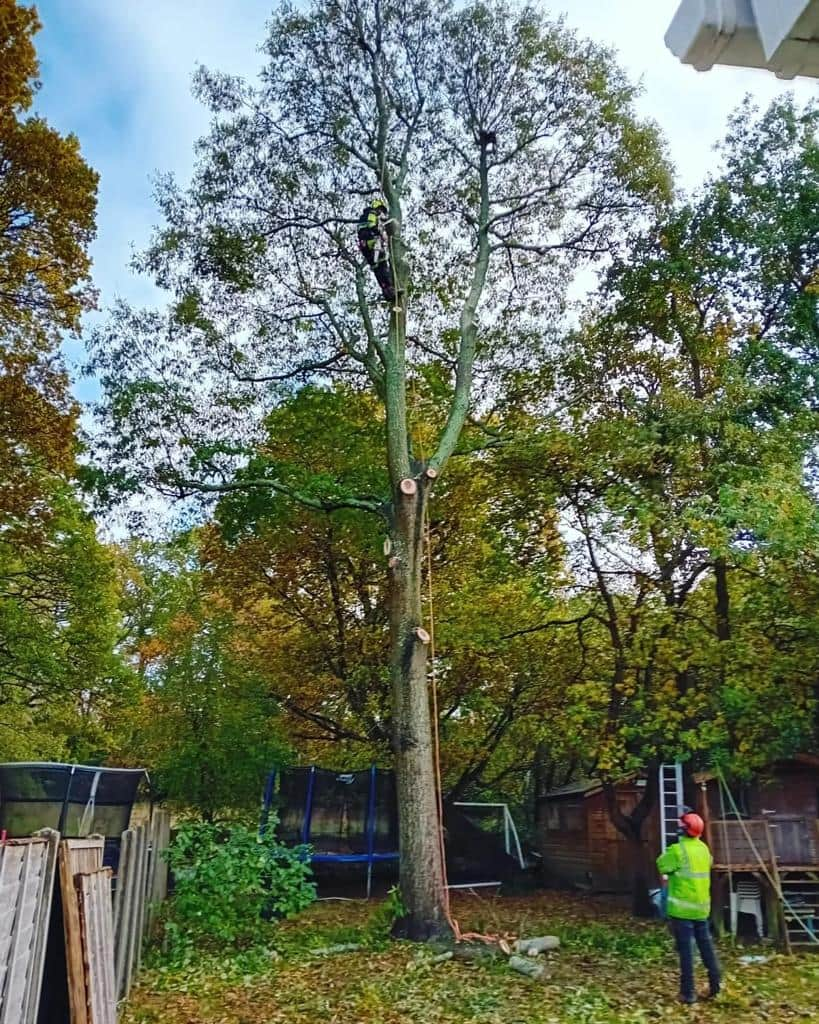Trees are an essential part of any landscape — they provide shade, beauty, and structure to gardens and outdoor spaces. However, even the healthiest trees occasionally need attention to maintain their form and safety. Recognising the signs that your tree needs pruning right away can prevent potential hazards, improve growth, and preserve the tree’s long-term health. NS Tree Surgery Farnham explains how to identify when your trees in Gillingham or the surrounding Surrey area are due for immediate pruning and why acting quickly makes a difference.
Why Tree Pruning Is So Important
Tree pruning is not simply about shaping the canopy or removing stray branches; it’s a vital part of tree maintenance. Regular pruning encourages strong growth, improves air circulation, and helps prevent disease. It also ensures that trees remain safe, especially when branches grow too close to buildings, power lines, or public pathways.
When left unchecked, overgrown or damaged branches can lead to more serious issues — from structural instability to decay and breakage. Knowing when to prune can help you maintain a healthy balance between safety, aesthetics, and environmental care.
Key Signs Your Tree Needs Pruning Right Away
1. Dead or Dying Branches
If parts of your tree are dry, brittle, or have no leaves while the rest of the tree appears healthy, those branches are likely dead or dying. Deadwood is one of the clearest indicators that pruning is required immediately. These branches can fall unexpectedly during strong winds or storms, posing risks to people, vehicles, or nearby structures.
2. Crossing or Rubbing Branches
When branches grow too close together or rub against each other, it can cause wounds in the bark. These wounds become entry points for disease and pests. Pruning removes the problem branches, allowing the remaining limbs to grow stronger and healthier.
3. Excessive Overgrowth or Dense Canopy
A tree with an overly thick canopy can block sunlight and air circulation, making it difficult for inner branches and leaves to thrive. This can weaken the tree over time. Strategic thinning allows light and airflow to penetrate the crown, improving the tree’s overall vitality and reducing the risk of fungal growth.
4. Low-Hanging or Obstructive Branches
If branches start encroaching on paths, driveways, or roofs, it’s time for immediate attention. Low-hanging branches not only cause inconvenience but can also damage property or interfere with visibility for vehicles. Pruning these branches keeps your outdoor space safe and functional.
5. Visible Cracks or Splits in Branches
Cracked branches are structural weak points that can worsen over time. These splits may indicate stress caused by heavy growth or previous storm damage. A qualified tree surgeon can assess which sections need pruning to prevent the damage from spreading to the rest of the tree.
6. Diseased or Infested Branches
Discolouration, fungal growth, oozing sap, or insect infestations are clear warning signs. Infected branches can spread disease throughout the tree or to neighbouring plants. Prompt pruning isolates the issue and helps stop further contamination.
7. Unbalanced or Lopsided Growth
When one side of a tree grows faster or heavier than the other, it creates imbalance and instability. This can make the tree more vulnerable to toppling in severe weather. Pruning helps restore structural symmetry, reducing stress on the trunk and roots.
Seasonal Considerations for Pruning
Although certain trees benefit from pruning at specific times of the year, some situations demand urgent attention regardless of the season.
- Winter and early spring are typically ideal for most pruning, as trees are dormant and wounds heal faster before new growth begins.
- Summer pruning can be used to manage overly vigorous growth and improve shape.
- Emergency pruning should be done at any time of year if there are safety concerns or signs of disease.
In areas like Gillingham and the wider Surrey region, weather can play a big role. Following periods of strong wind or heavy rain, it’s worth inspecting your trees for broken or hanging branches that may need prompt removal.
The Dangers of Delaying Tree Pruning
Delaying necessary pruning can quickly escalate from a small problem to a major one. Overgrown or diseased branches can:
- Compromise the structural integrity of the tree.
- Increase the risk of falling debris during storms.
- Allow pests and decay to spread.
- Lead to costly damage to surrounding property.
Timely pruning ensures safety while encouraging healthier, more sustainable growth patterns. It also enhances the appearance of your garden, keeping trees neat and well-balanced throughout the seasons.
How Professional Tree Surgeons Can Help
While light trimming or removing small branches might seem manageable for homeowners, professional pruning ensures the work is done safely and correctly. Experts such as NS Tree Surgery Farnham have the knowledge to identify which branches to remove, how to make precise cuts that promote healing, and how to maintain the tree’s natural shape.
Professional tree surgeons also use the right tools and techniques for each species, ensuring no unnecessary damage is done. They can identify deeper issues like hidden decay or pest activity that might not be obvious to an untrained eye.
Maintaining Tree Health Year-Round
Beyond reactive pruning, regular maintenance plays a crucial role in preventing emergencies. Scheduling an annual inspection helps catch early signs of disease, decay, or overcrowding before they become serious.
Ongoing maintenance tips include:
- Monitoring trees after storms or heavy rainfall.
- Removing fallen branches and debris from the canopy.
- Keeping trees properly watered during dry spells.
- Avoiding over-pruning, which can stress the tree.
A balanced approach ensures your trees remain strong, healthy, and attractive throughout the year.
Choosing the Right Time to Call a Professional
If your tree shows any of the warning signs mentioned — especially cracked limbs, deadwood, or visible decay — it’s best to call a professional as soon as possible. Acting early not only keeps your property safe but also saves the tree from unnecessary decline.
For residents in Gillingham and across Surrey, NS Tree Surgery Farnham offers expert advice and professional pruning services tailored to the needs of every tree species and garden environment.
Conclusion
Trees are resilient, but even the strongest need care and attention. Recognising when your tree needs pruning right away can prevent damage, promote growth, and maintain a safe, beautiful outdoor space. Whether you’ve noticed overhanging branches, signs of disease, or simply feel your trees are due a health check, NS Tree Surgery Farnham provides professional solutions that protect and enhance your landscape in Gillingham and beyond.
Call us on: 01252 412 395
Click here to find out more about NS Tree Surgery Farnham
Click here to complete our contact form and see how we can help with your tree needs.

